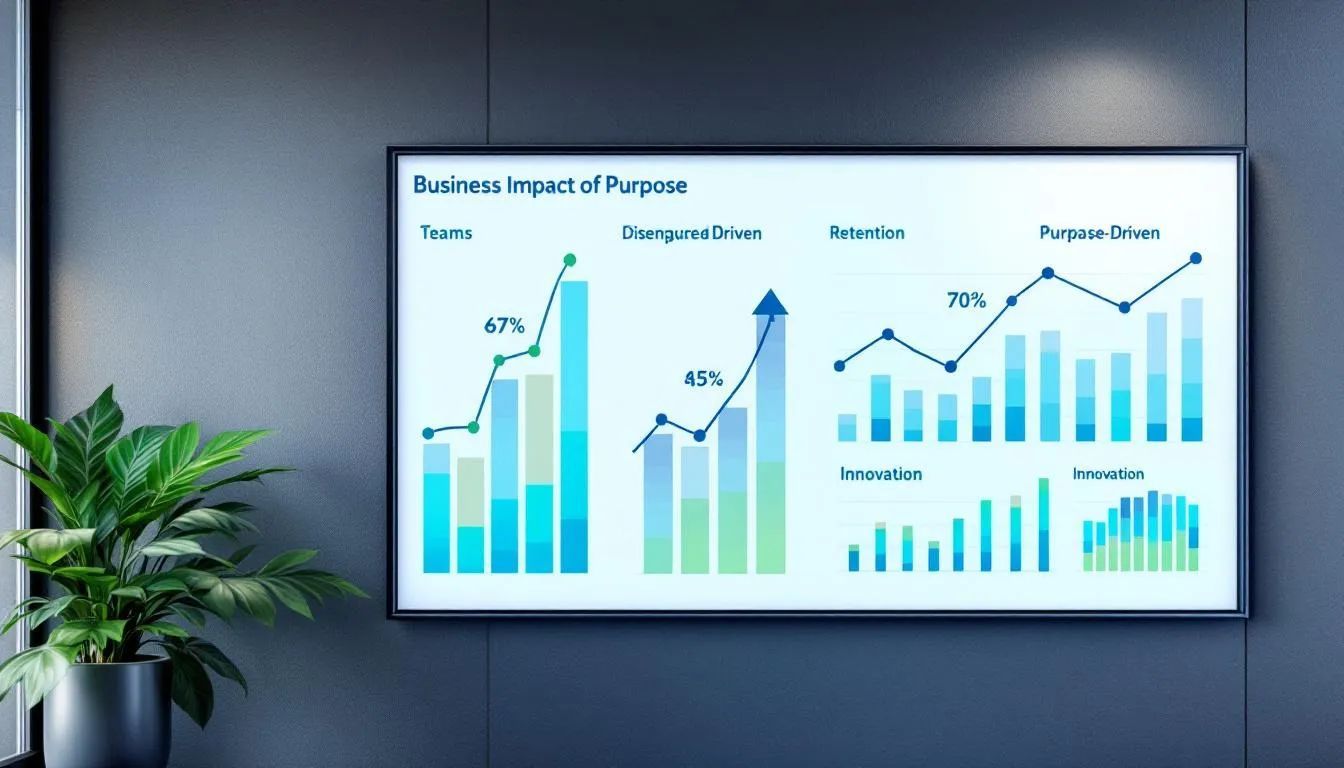A lack of purpose in employees is one of the most pressing challenges facing leaders in 2025. When team members feel disconnected from their work, motivation drops, innovation stalls, and turnover rises. Yet, purpose isn’t a mysterious force—it's a practical, learnable ingredient that modern organizations can foster every day. If you’re wondering how to spot, address, and prevent a lack of purpose in employees, this guide offers actionable steps and frameworks to transform your workplace into a thriving, purpose-driven community.
Let’s explore why purpose matters more than ever, how to diagnose disengagement, and the concrete strategies that help every employee rediscover meaning in their work.
Why Purpose Matters More Than Paychecks in 2025
In 2025, the workplace has evolved beyond just salaries and perks. Employees—especially Millennials and Gen Z—demand more from their jobs than a monthly paycheck. They want to feel that their work matters, that it connects to a bigger mission, and that they belong to a community with shared values.
The primary keyword, lack of purpose in employees, has become a critical concern for leaders because research consistently shows that purpose-driven cultures outperform others. According to a Great Place To Work study, companies with high levels of purpose and clarity among employees outperform the stock market by nearly 7%. Meanwhile, McKinsey found that 70% of employees define their sense of purpose through their work, yet only 18% feel they get as much purpose from work as they want.
When employees lack purpose, outcomes suffer:
- Engagement drops, leading to lower productivity.
- Retention rates decline, with top talent seeking more meaningful opportunities.
- Innovation slows, as uninspired employees are less likely to contribute new ideas.
Purpose, then, is not a “nice-to-have.” It’s the heartbeat of a resilient, high-performing organization.
"Purpose-driven cultures outperform others!"
—Great Place To Work
Spotting the Early Signs of a Lack of Purpose in Employees

A lack of purpose in employees rarely appears overnight. Instead, it creeps in quietly, showing up as subtle shifts in behavior and performance. Leaders who know what to look for can intervene early and prevent deeper disengagement.
Metrics that Reveal Disengagement
Numbers often tell the first part of the story. Here are key metrics that can reveal a growing lack of purpose:
- Declining engagement scores: Regular pulse surveys show drops in enthusiasm or connection.
- Increased absenteeism: Employees begin taking more sick days or arriving late.
- Lower productivity: Output decreases, deadlines are missed, and errors rise.
- High turnover or internal transfers: More employees leave or seek new roles within the company.
A table can help summarize these warning signs:
Common Myths Leaders Believe
Many leaders fall into traps when diagnosing purpose gaps. Here are some common myths:
- _“If I pay more, people will care more.”_
Compensation matters, but it doesn’t replace a sense of meaning. - _“Purpose is only for nonprofits or startups.”_
Every company, from tech giants to manufacturers, can foster purpose. - _“Quiet employees are just introverts.”_
Sometimes, withdrawal is a sign of lost connection, not just personality.
Recognizing these myths helps leaders address the real issues behind disengagement.
Root Causes Behind Employees’ Purpose Void
Understanding why a lack of purpose in employees develops is crucial for solving it. Purpose gaps rarely have a single cause—they’re often the result of overlapping issues.
Misaligned Values and Company Mission
When employees’ personal values clash with the company’s stated mission, they struggle to find meaning in their work. For example, if an organization claims to value innovation but rewards conformity, employees may feel disconnected.
Leaders must ensure that the company’s mission is clear, authentic, and lived daily. Regularly communicating how each role contributes to the bigger picture helps bridge this gap.
Career Stagnation and Skill Gaps
A lack of growth opportunities is a major driver of disengagement. Employees who feel stuck or unable to develop new skills quickly lose motivation.
- No clear path for advancement
- Skills not matched to current roles
- Lack of mentorship or training
Organizations that invest in learning and development, including cross-training and mentorship, help employees rediscover purpose.
Burnout and Work-Life Imbalance
Burnout is not just about workload—it’s about a loss of meaning. When employees are overwhelmed or can’t balance work with life, their sense of purpose erodes.
- Excessive overtime and lack of breaks
- Little flexibility or autonomy
- No recognition for effort
Supporting work-life balance and showing genuine care for well-being can reignite enthusiasm and commitment.
Business Consequences of Ignoring Purpose Gaps
Failing to address the lack of purpose in employees carries real costs for organizations. These consequences affect not just individual well-being but also the bottom line.
Attrition Costs
Replacing an employee can cost up to twice their annual salary, factoring in recruitment, onboarding, and lost productivity. High turnover disrupts teams, drains resources, and damages morale.
"Workplace belonging can lead to a 50% reduction in turnover risk."
—Deloitte
Innovation Slowdown
Purpose fuels creativity. When employees don’t see the point in their work, they stop suggesting new ideas or improvements. This leads to:
- Fewer product or process innovations
- Missed opportunities for growth
- A stagnant, risk-averse culture
A lack of purpose in employees directly slows progress and competitiveness.
Building a Purpose-Driven Culture from Day One
Purpose doesn’t just happen—it’s intentionally built into the fabric of an organization from the start. Here’s how leaders can create a culture where meaning thrives.
Crafting a Clear Organizational North Star
A strong mission statement is only the beginning. Leaders must:
- Define the company’s “why”—its reason for existing beyond profit.
- Communicate this purpose clearly and often, linking it to daily decisions.
- Involve employees at all levels in shaping and living the mission.
When everyone knows the North Star, alignment and motivation follow.
Embedding Purpose into Everyday Workflows
Purpose should be woven into daily routines, not reserved for annual meetings. Practical steps include:
- Connecting individual tasks to the broader mission during team huddles.
- Sharing customer stories and impact metrics regularly.
- Recognizing and celebrating purpose-driven behaviors.
Neroia, for example, helps organizations effortlessly discover authentic connections through AI-driven group activities, making purpose part of everyday experience rather than an abstract ideal.
Manager Playbook: Re-Lighting the Spark in Individual Team Members

Managers play a pivotal role in helping employees overcome a lack of purpose. Personalized attention and structured conversations can reignite motivation and engagement.
Purpose Conversations Framework
Engage employees with open-ended questions that invite reflection:
- _What aspects of your work feel most meaningful to you?_
- _Are there tasks or projects you wish you could do more of?_
- _How do you see your role connecting to our company’s mission?_
- _What skills or strengths do you want to develop next?_
Listen actively, avoid jumping to solutions, and allow employees to express their aspirations and frustrations. This builds trust and surfaces actionable insights.
Aligning Personal Goals with OKRs
Employees are most engaged when their personal goals align with organizational objectives. Use OKRs (Objectives and Key Results) to:
- Co-create goals: Involve employees in setting objectives that matter to them.
- Ensure alignment: Map personal goals to team and company OKRs.
- Track progress: Review regularly and adjust as needed.
- Celebrate wins: Recognize both outcomes and effort.
This ordered approach ensures that every team member sees how their work contributes to the greater whole.
"When employees know exactly how their work contributes to business success, they find their work meaningful and naturally find purpose at work."
—Haiilo
Measuring Success: KPIs and Tools to Sustain Purpose Over Time
Purpose-driven cultures are built on continuous feedback and measurement. Leaders need the right tools and metrics to sustain progress.
Pulse Surveys and Engagement Platforms
Regular pulse surveys provide real-time insights into employee sentiment. Key questions include:
- Do you feel your work is meaningful?
- Can you see how your role supports the company’s mission?
- Are you proud to work here?
Platforms like Neroia can support these efforts, helping teams stay connected and providing anonymized insights to guide leadership decisions.
Recognition & Feedback Loops
Recognition is a powerful driver of purpose. Effective systems include:
- Peer-to-peer recognition programs
- Regular manager feedback sessions
- Company-wide celebrations of purpose-driven achievements
A bullet list of best practices for sustaining purpose:
- Schedule monthly recognition moments
- Encourage cross-team appreciation
- Tie recognition to specific company values and mission
Frequent, genuine feedback keeps purpose top of mind and motivates ongoing engagement.
Conclusion
The lack of purpose in employees is not an unsolvable mystery—it’s a challenge that modern leaders can meet with empathy, clarity, and practical strategies. By spotting early warning signs, addressing root causes, and embedding purpose into every layer of the organization, leaders build workplaces where people thrive and businesses excel.
Platforms like Neroia offer organizations a seamless way to foster authentic connections and make purpose part of daily life. By prioritizing meaning over mere metrics, you can create a culture where employees are excited to show up, innovate, and grow—together.
Ready to overcome the lack of purpose in employees? Start today, and watch your organization transform from the inside out.




